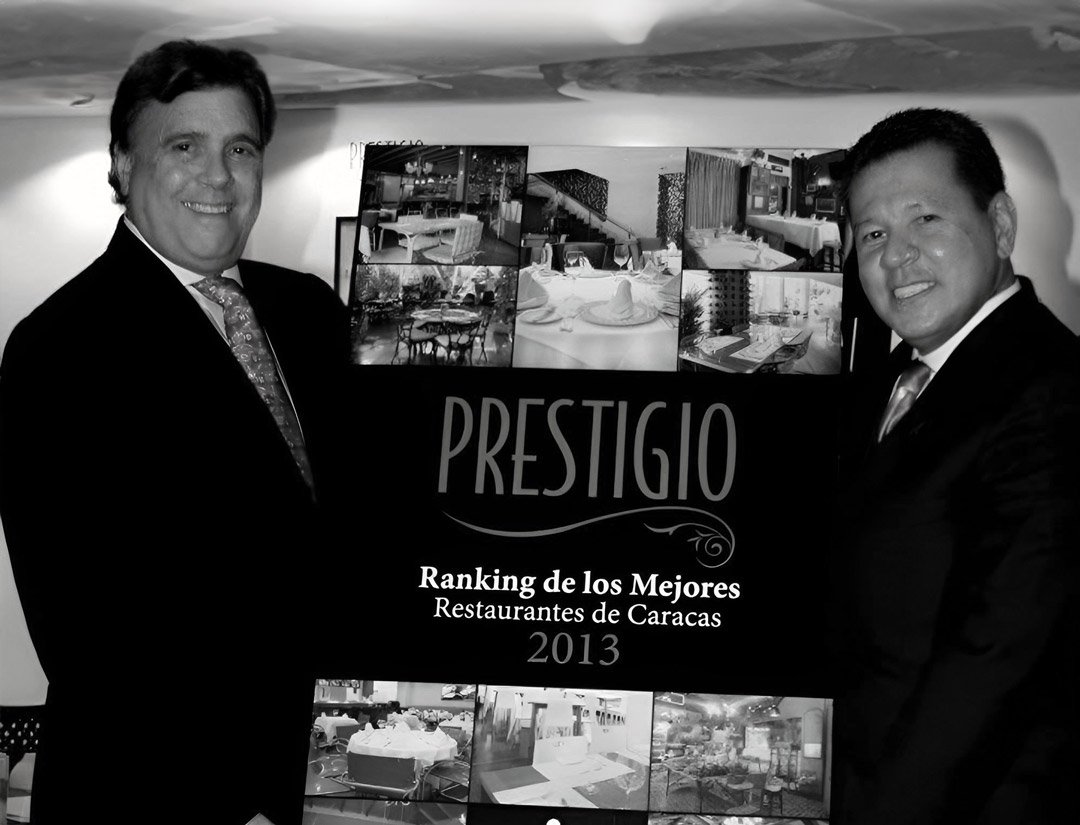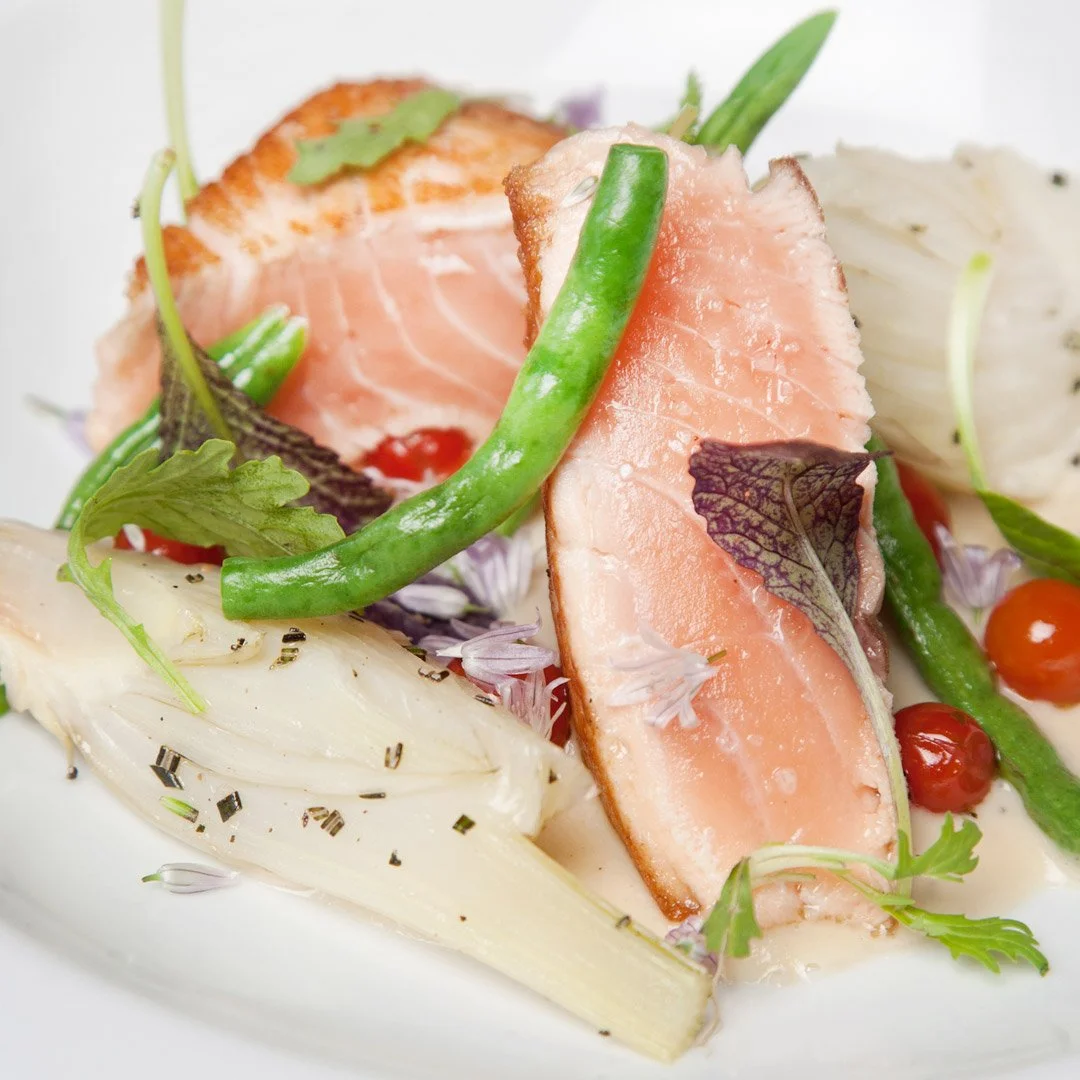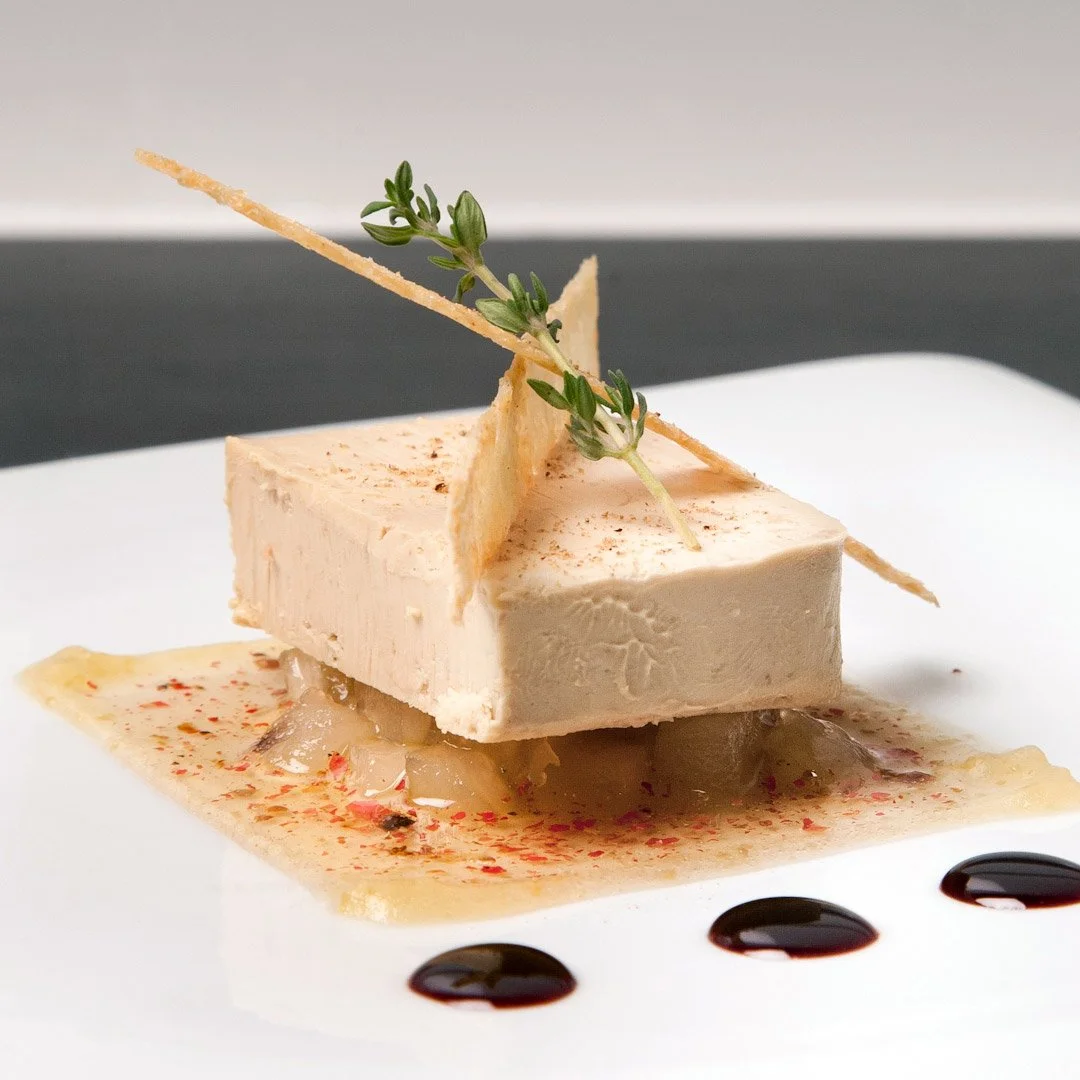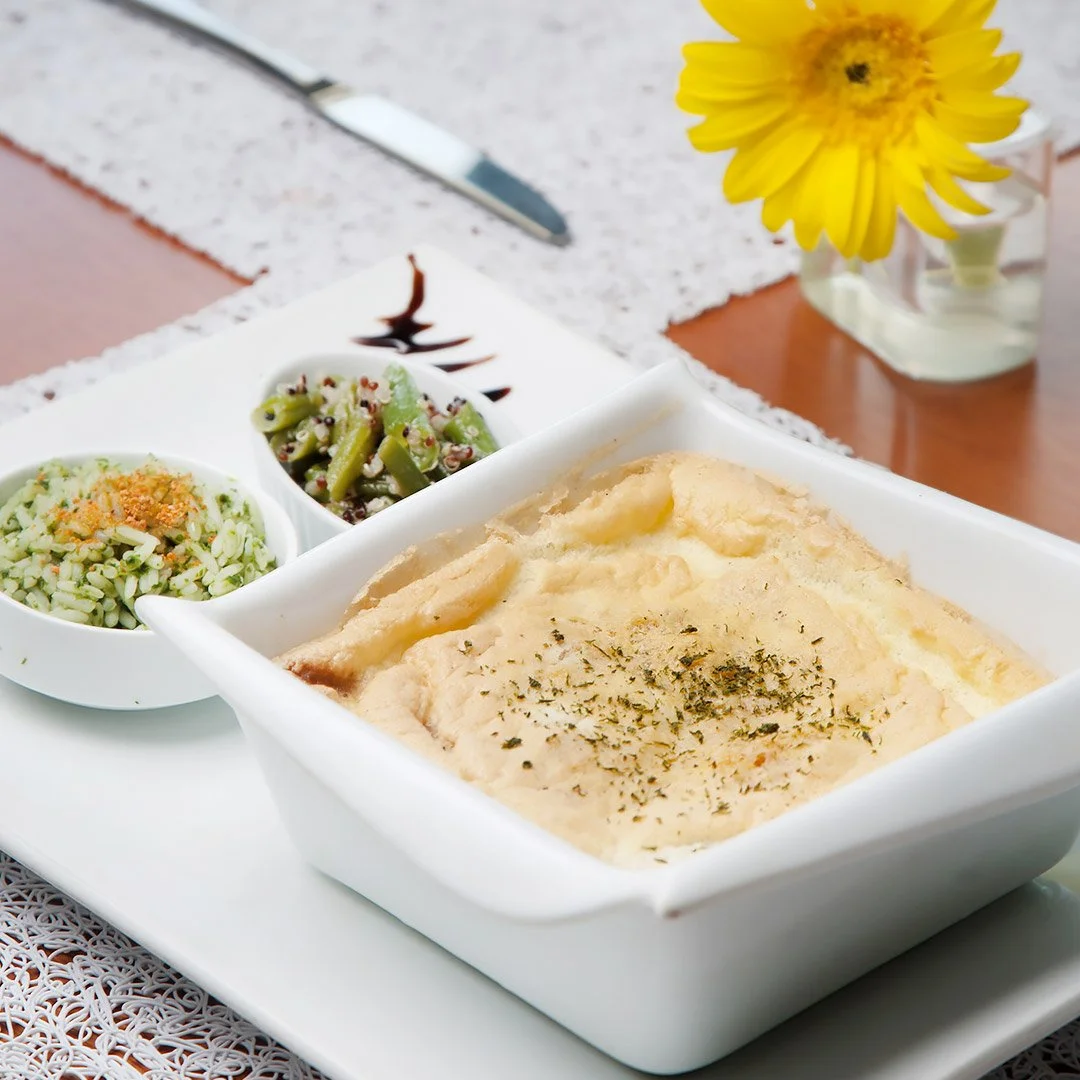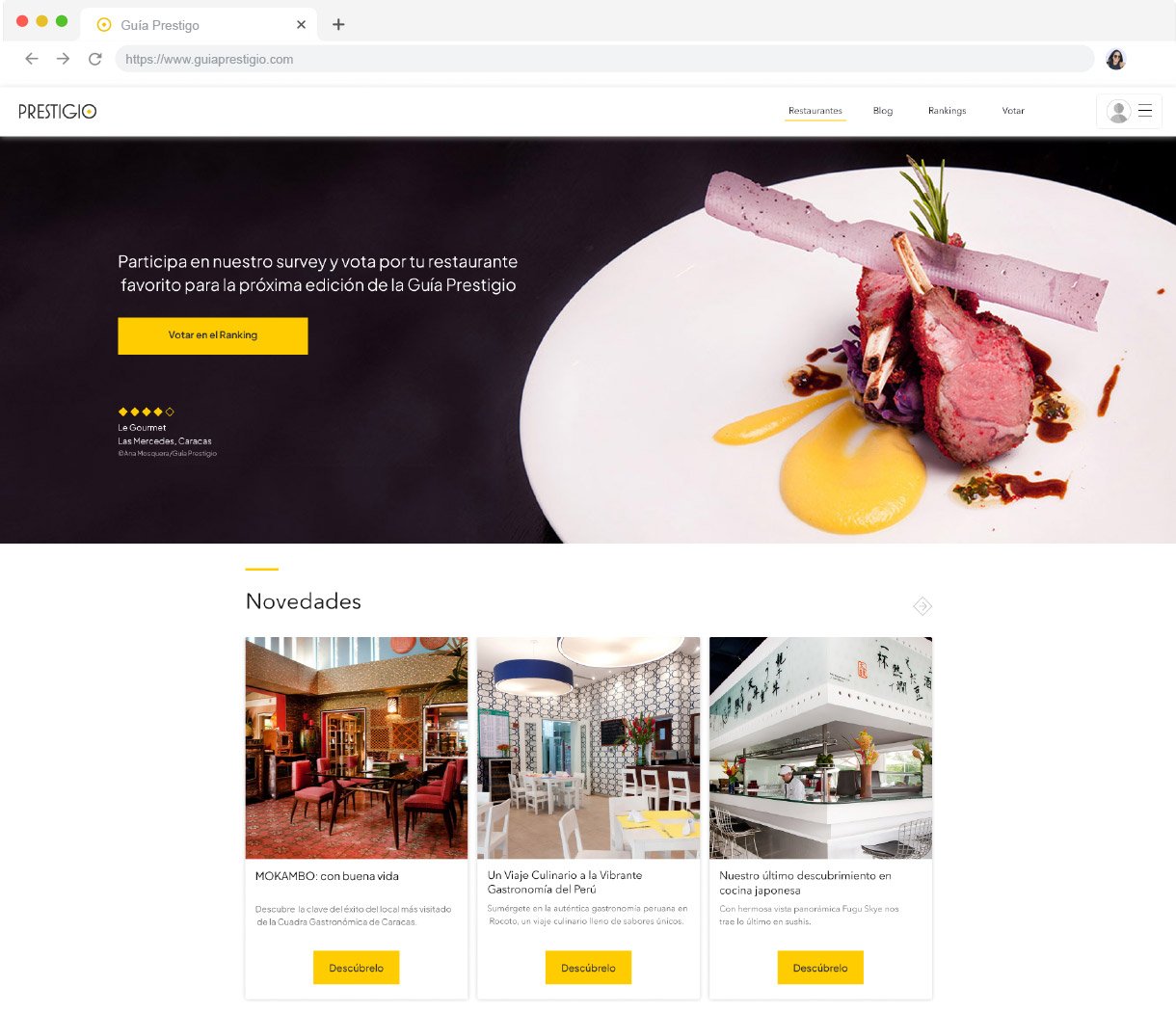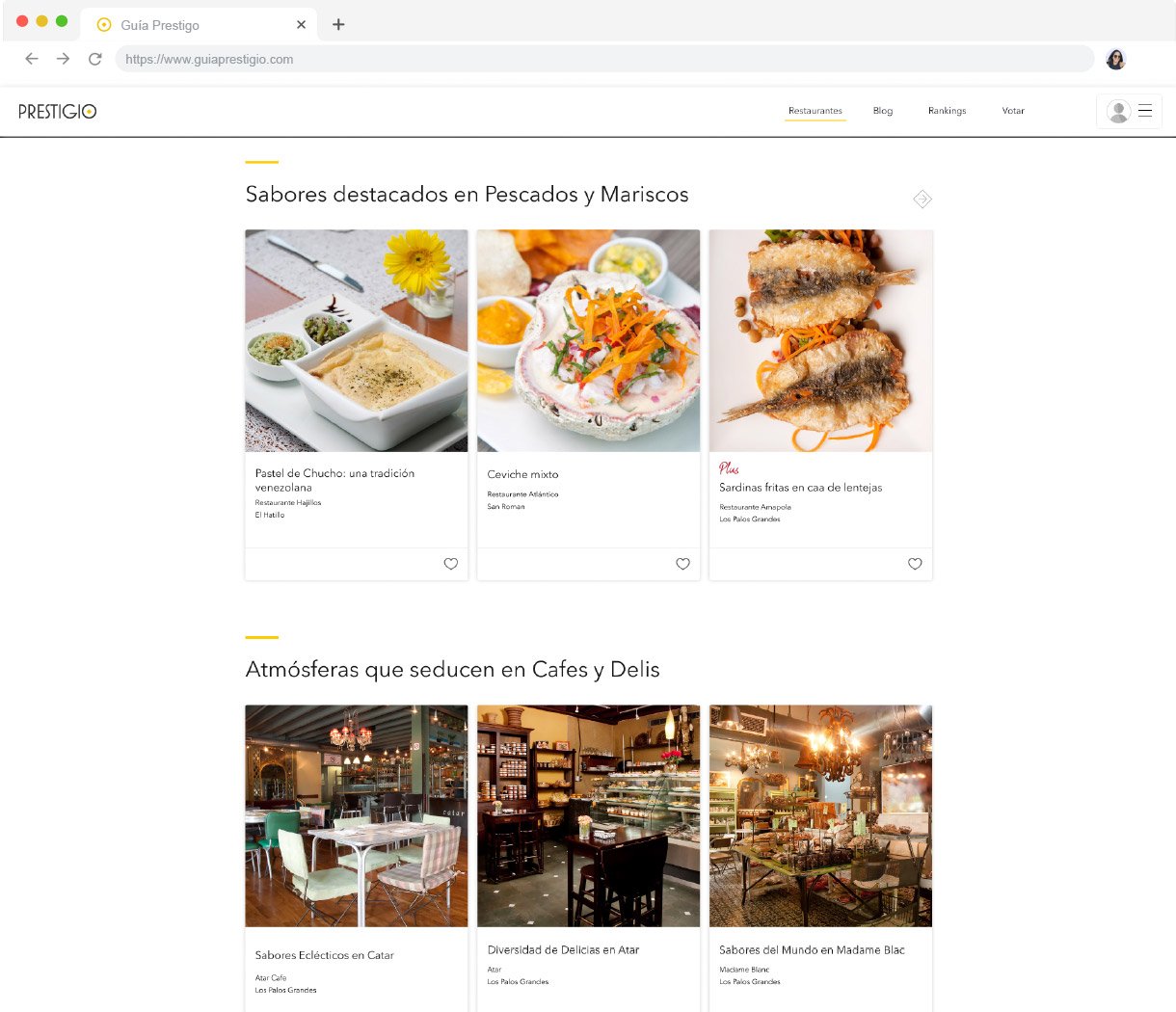Guía Prestigio
Venezuela
Online Voting experience and Print Redesign for a Restaurant Ranking Guide
Role
Product Design: Responsibilities included UX and UI design, publication design, and photography.
Tools
Photoshop
Lightroom
Canon EOS 5D Camera
Illustrator
Dreamweaver
InDesign
Adobe XD
Driven by the aspiration to involve consumers as critics, the Prestige Guide is a gastronomy publication that aims to encapsulate the diner's unique perspective. To achieve this objective, Prestige has implemented a ranking system through an online web survey, democratizing the selection process for top restaurants. Additionally, Prestige conducts personal interviews with industry leaders from diverse backgrounds to help nominate participants for the survey. This approach serves as the guiding principle that ensures a discerning experience for the public when making dining decisions in Caracas.
Following a 7-year hiatus, our goal was to rejuvenate the visual identity of the Prestige brand. To accomplish this, we embarked on a comprehensive journey involving the conception of a fresh publication design, an innovative website, and an enhanced voting interface. Employing meticulous data collection and strategic insights, I forged the brand's visual aesthetics, harmonizing key elements such as color palette, typography, and photography.
Project goals
Pain Points
Prestige's reentry into the market hinged on establishing resonance with both its loyal base and new audiences. Integral to this endeavor was the critical imperative of upholding the survey's credibility, representing a central challenge that demanded careful consideration and strategic handling.
Challenges
The project faced data modeling challenges, particularly the need to prevent multiple votes from a single survey participant in each category. This requires us to validate and gather input from all survey participants and work hand in hand with data managers.
Moreover, maintaining design consistency across the new publication design, website, and voting interface presented complexities, demanding carefull synchronization of elements, including color schemes, typography, and layout styles.
Item 1 of 7
Deliverables
The project's scope involved a holistic redesign strategy. Initially, I aimed to restore Prestigio's authentic food photography approach of capturing "real" dishes as enjoyed by diners. This entailed employing natural light with soft flash fillers and no makeup artistry. I also shot ambient photographs and architectural details to better describe the dining experience.
Next, I shifted my focus to the publication's design and its structural organization so it would emphasize restaurant categories and refine reading comprehension. After careful consideration, we established a framework with three distinct sections for each nominated restaurant: journalist articles, diner comments, and chef notes.
Lastly, my efforts were directed toward ensuring the website’s alignment with the new visual style. I also created the UI for an upgraded survey system that enhanced user engagement and interaction while maintaining a seamless user experience.
Our goal was to design a website that would streamline the voting process and seamlessly complement the publication. To achieve this, I developed an information architecture model that highlighted key survey sections such as food, ambiance, service, and price. Users were incentivized to engage by creating accounts, liking posts, and bookmarking their preferred restaurants. This not only made voting decisions easier for the public but also perfectly resonated with our vision of creating a gastronomy ranking guide that is influenced and shaped by the opinions of the general public.
Website
Survey
In designing the survey, my focus was on creating a flexible structure that allowed participants to seamlessly select multiple categories and vote for numerous restaurants within each category, all within a single survey session. The system meticulously recorded vote counts via the provided email accounts, guaranteeing a singular vote per restaurant. This strategic approach successfully tackled the need to prevent users from submitting multiple votes, thus preserving the authenticity and integrity of the voting process.
Reflecting on the project, I recognize the potential for incorporating additional features to enhance the user experience. Among these possibilities, we could add an interactive map showcasing restaurant locations and other content, such as visual menus and chef interviews. Additionally, exploring ideas like exclusive restaurant offers, seasonal highlights, and integration with local food events could further elevate the user experience, providing a more interactive and comprehensive guide to dining within the city.

